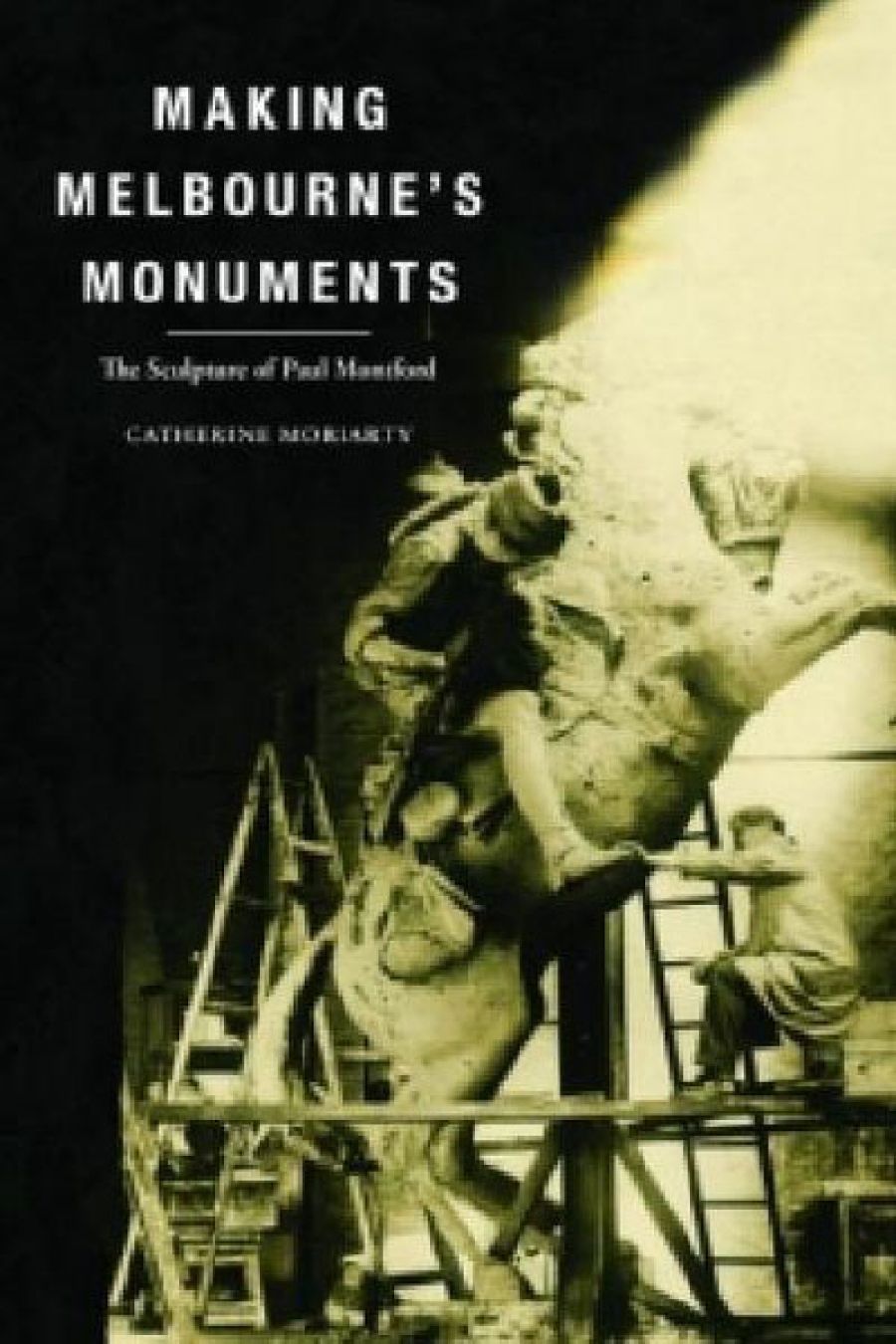
- Free Article: No
- Contents Category: Cultural Studies
- Subheading: The Sculpture of Paul Montford
- Custom Article Title: Christopher Menz reviews 'Making Melbourne’s Monuments' by Catherine Moriarty
- Review Article: Yes
- Article Title: Making Melbourne's Monuments
- Online Only: No
- Custom Highlight Text:
When Paul Raphael Montford (1868–1938) settled in Melbourne in 1923, one press report claimed that he was ‘one of England’s best-known sculptors’, but despite having created works for the façade of the Victoria and Albert Museum and for Westminster Abbey, as well as numerous public sculptures in Australia, his work is not well known in either country. His reputation has always been overshadowed by his infinitely more successful and slightly older contemporary and rival, Bertram Mackennal.
- Book 1 Title: Making Melbourne’s Monuments
- Book 1 Subtitle: The Sculpture of Paul Montford
- Book 1 Biblio: Australian Scholarly Publishing, $49.95 pb, 333 pp, 9781921875595
Catherine Moriarty’s interesting and detailed account helps redress this balance. Montford was the last example of what can be termed an architectural sculptor, when sculptures were integral to the embellishment of a building. What might have been a slender account in rehabilitating an artist’s reputation is given richness and vitality through the inclusion of extensive correspondence, mostly from Montford to his brother Louis in London, covering the period 1923–30. Some is general family news and chit-chat, but there are interesting comments on Australian society and landscape. The most rewarding parts cover his role as a sculptor in Melbourne during the 1920s.
Montford’s public works in Australia include sculptures on the Shrine of Remembrance, the statue for Adam Lindsay Gordon in Melbourne, and the W.B. Chaffey memorial in Mildura, and portraits in Old Parliament House, Canberra. In addition to his numerous public commissions, he supported himself by making portrait busts of Melbourne notables. In his letters, Montford describes the process of securing work via competitions and commissions, as well as those he missed out on, the costing process, the difficulties of casting, and his various subjects.
In addition to the biographical account that succinctly places Montford in context, and along with the correspondence – all extensively researched and footnoted – Moriarty provides a detailed catalogue of Montford’s work. A generous selection of images helps bring this elusive figure to life.


Comments powered by CComment